| Shasta Blue Plebejus shasta Immatures |
| Home - Butterflies - Details |
| Female |
Female oviposited one on 31 July, one on 1 August,
five on 2 August 2013, nine on 3 August 2013
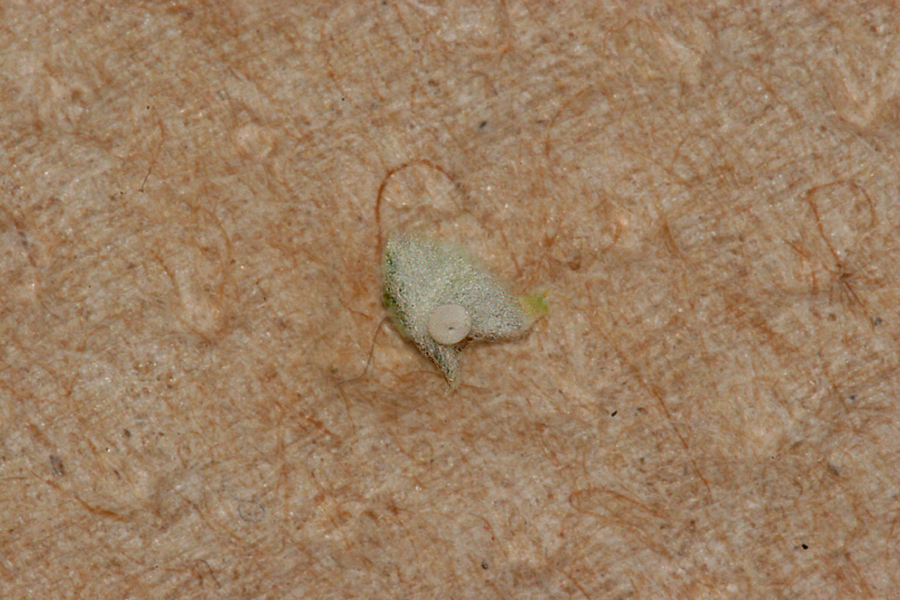
#1 First Instar - under 1 mm long - March 25, 2014
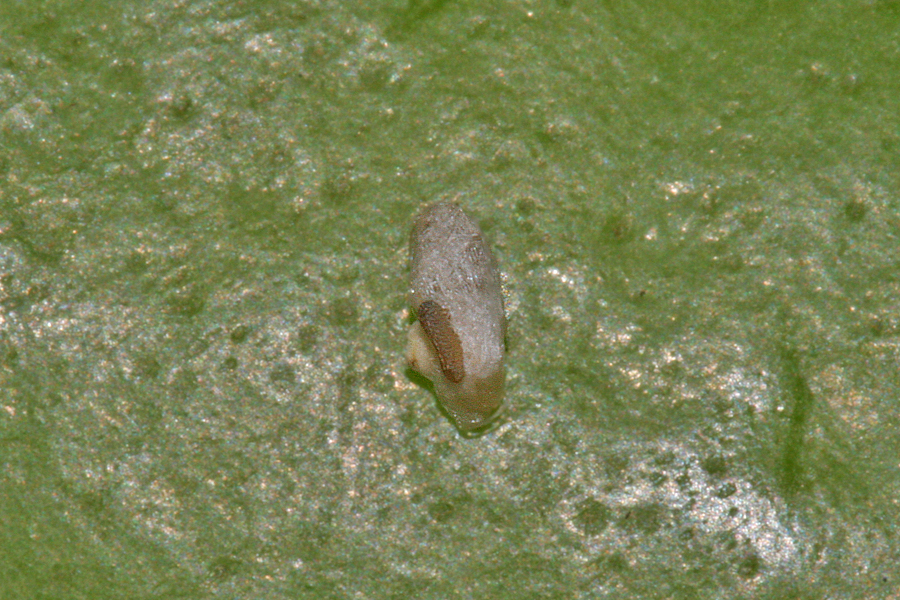
#2 First Instar on fresh flower - 1.25 mm long - 28 March 2014
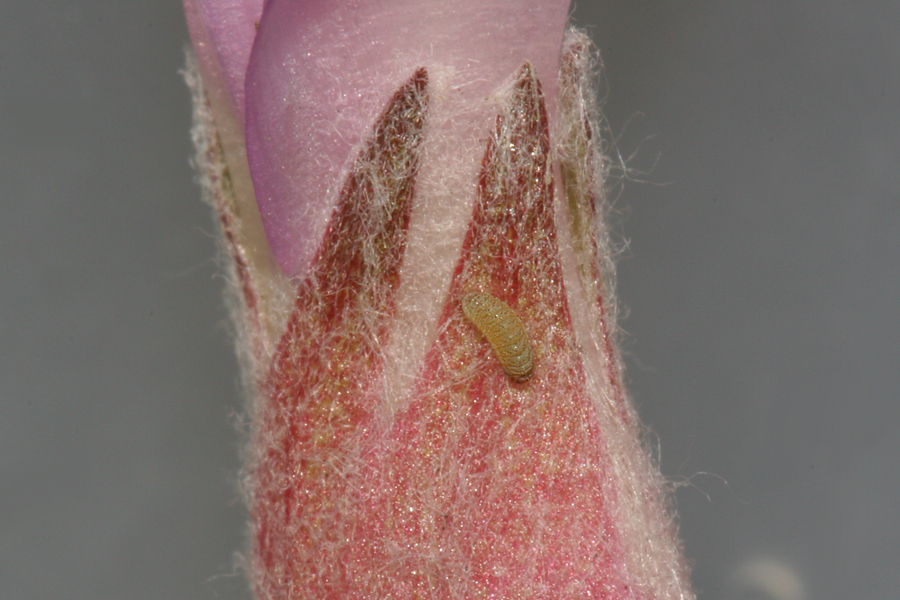
#2 Second Instar on April 7, 2014 - ~3 mm long
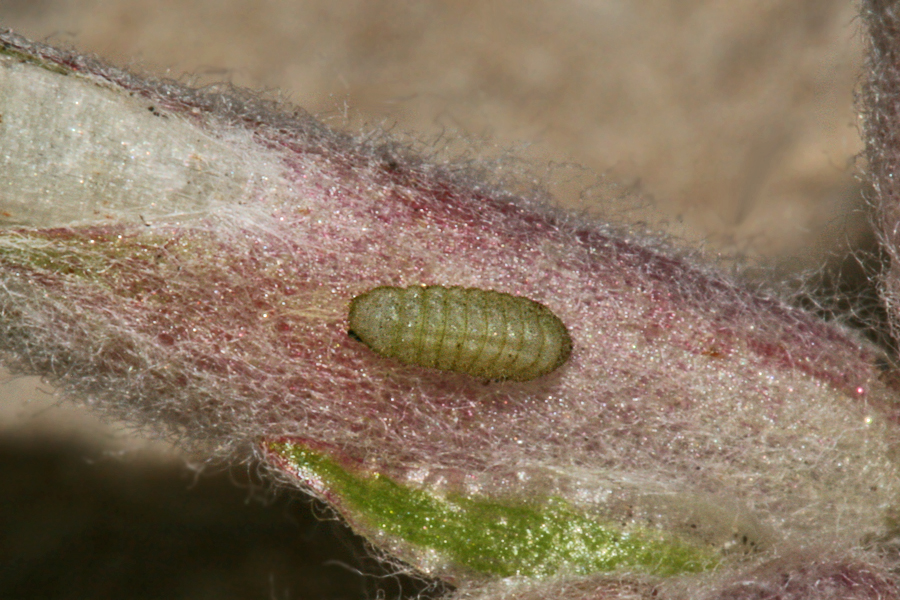
#2 Second Instar on April 7, 2014 - ~3 mm long
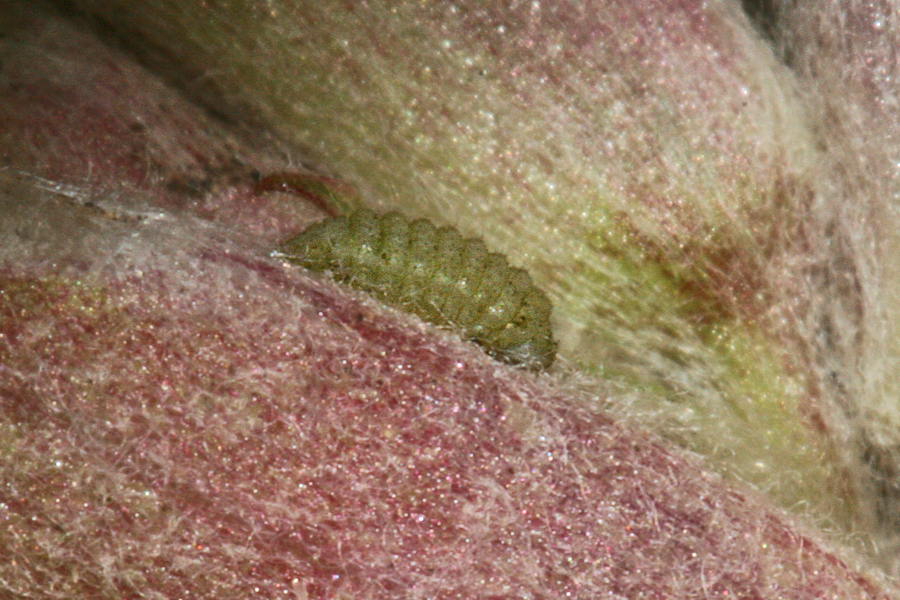
April 8, 2014 Shows exuvia
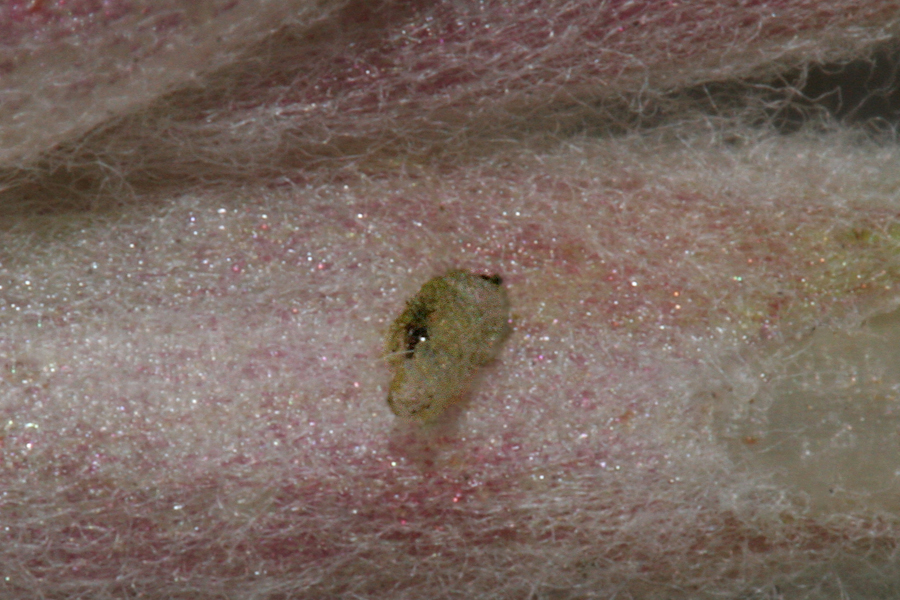
#2 Third Instar camouflaged on April 8, 2014
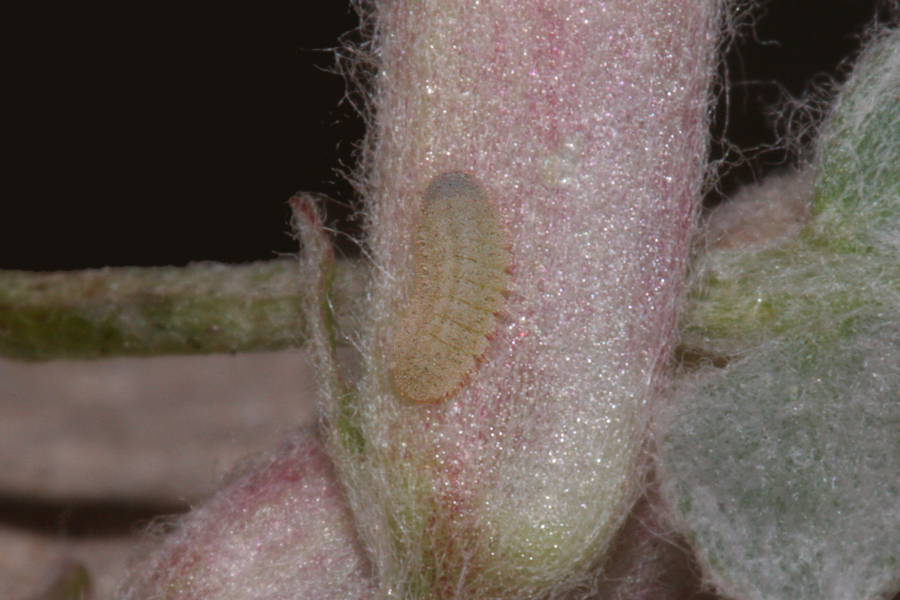
#2 Third Instar on April 8, 2014
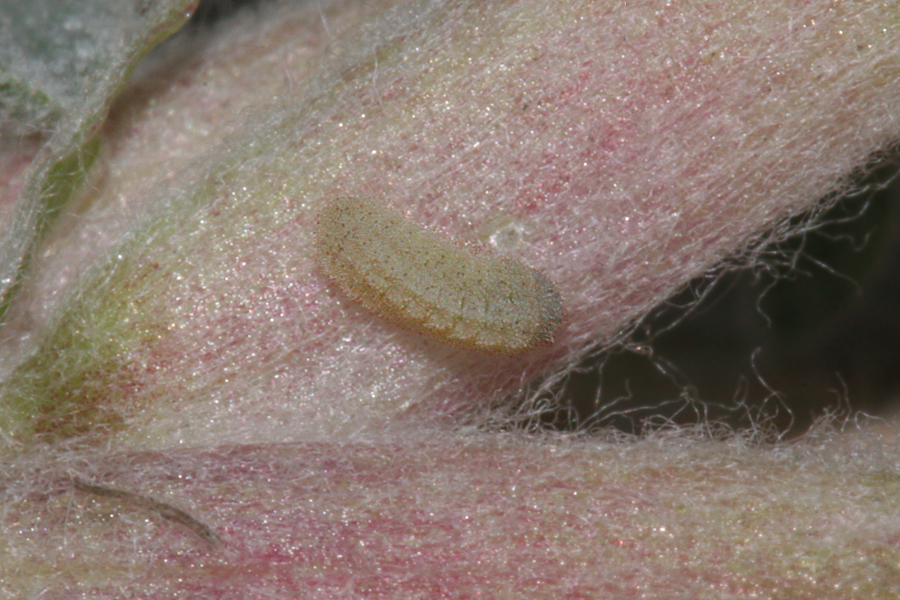
#2 Third Instar on April 10, 2014
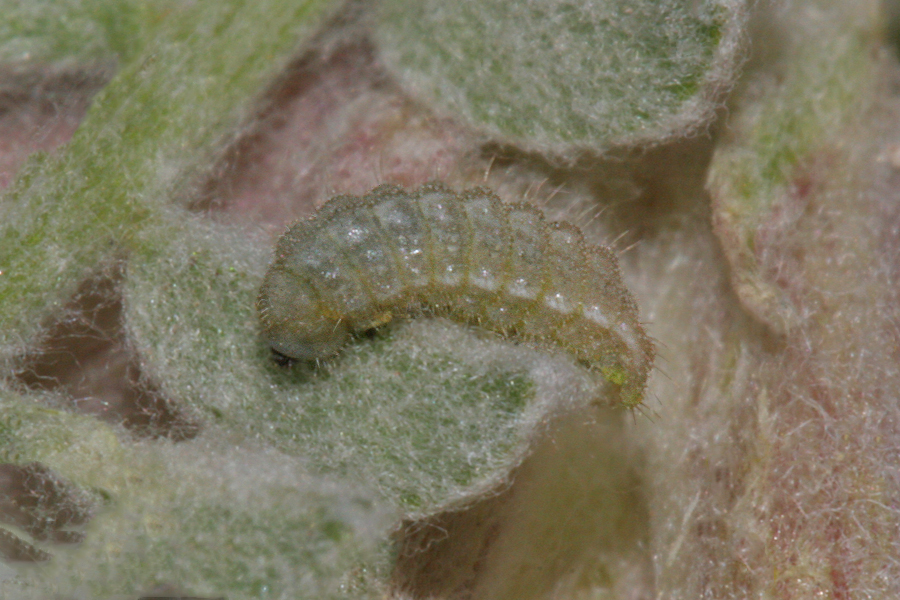
#2 Exuvia - Molted to Fourth Instar on April 13, 2014
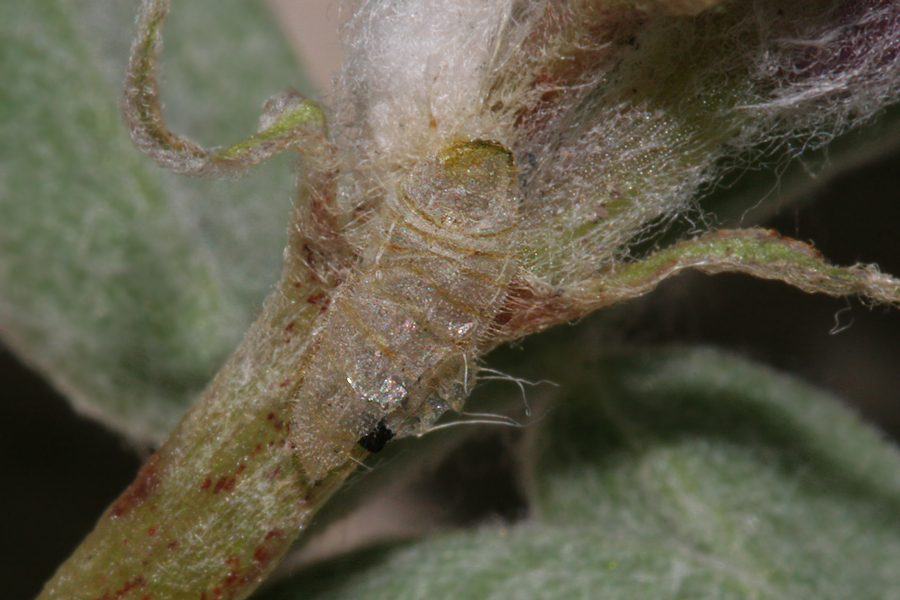
#2 Molted to Fourth Instar on April 13, 2014
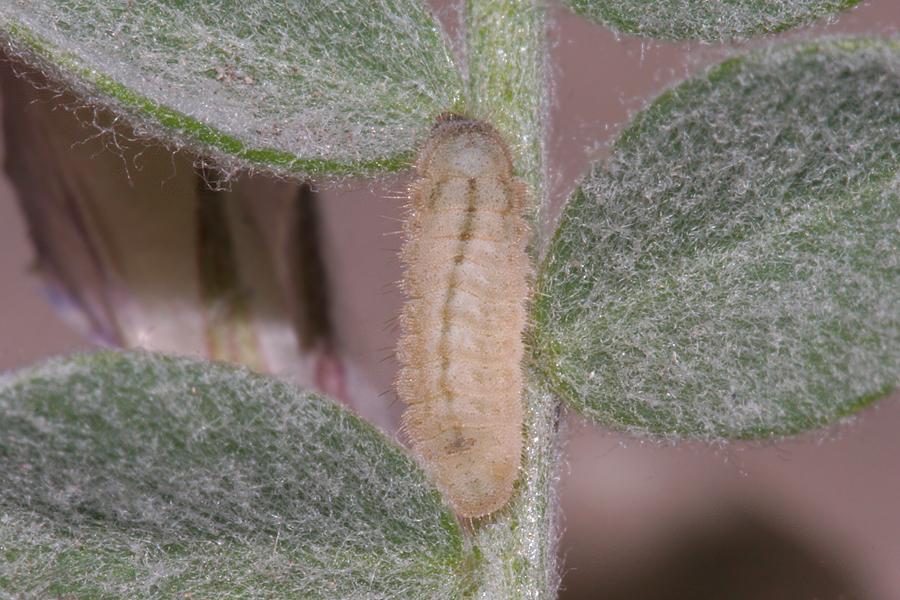
#2 April 16, 2014 - Fourth Instar
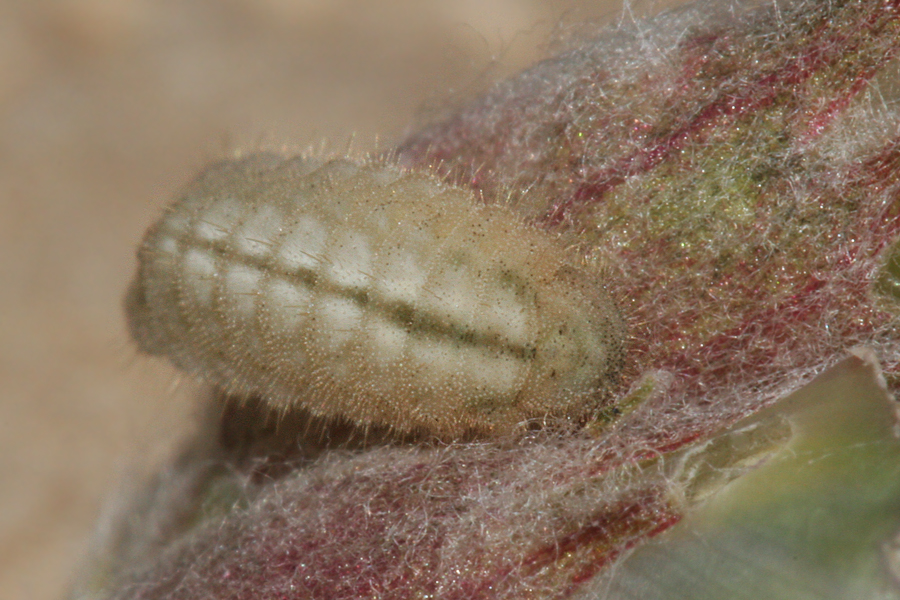
#2 April 16, 2014 - Fourth Instar
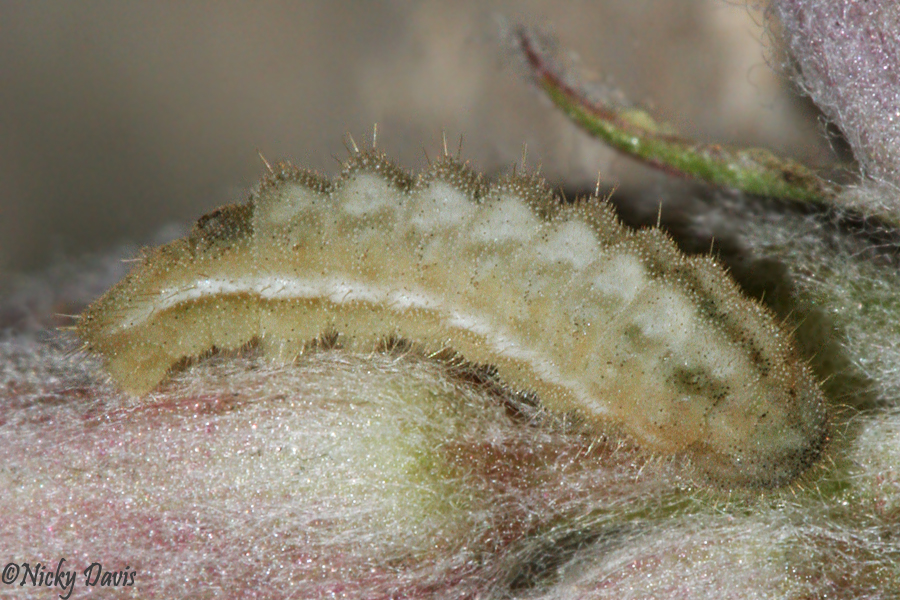
#2 April 16, 2014 - Fourth Instar
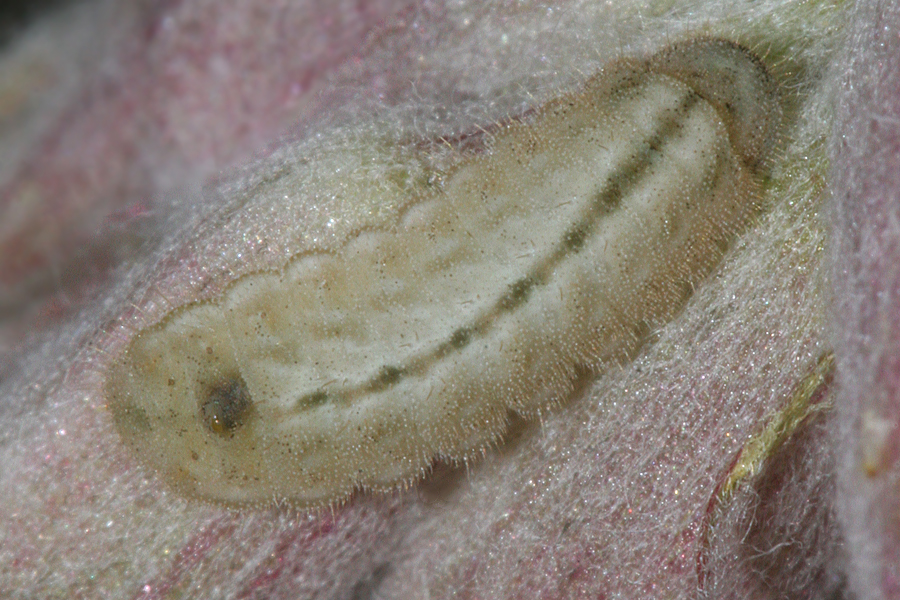
#2 April 16, 2014 - Fourth Instar
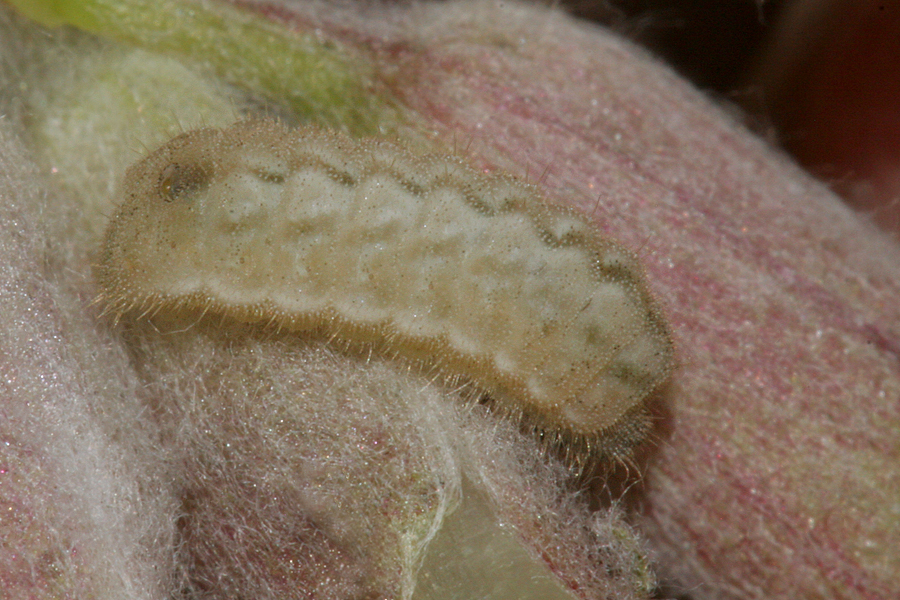
PUPA
| Pre-pupa on
21 April 2014, Pupa formed ~9 P.M. 23 April 2014 - 9 mm long |
|
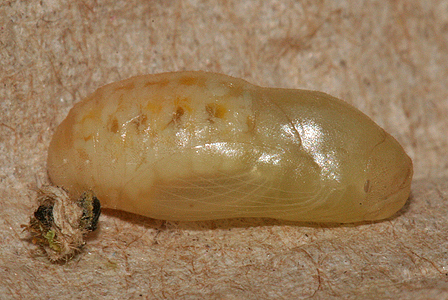
|
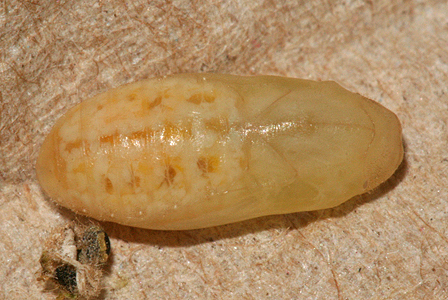
|
Pupa 3 May 2014 -
showing dark eye
spot
indicating development to butterfly |
|
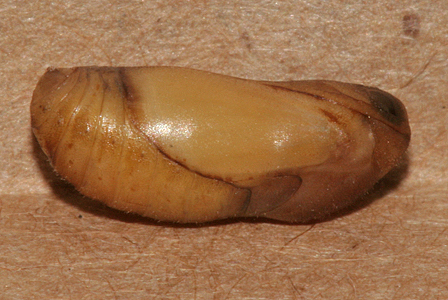
|
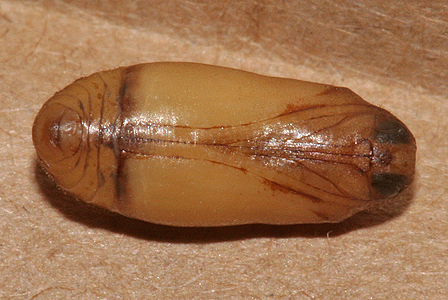
|
| PHOTO DETAILS - ©Nicky Davis Jack Harry, Les and Nicky Davis located Plebejus shasta at Farmington Canyon near Francis Peak, 30 July 2013 Elevation - 8815 feet N 41.04.22, W 111.50.36 Female began ovipositing better after moving her and the plant to a container wide enough for the plant to lay out flat as it does in nature. The height of the container was restricted to keep her closer to the leaves of the plant. A small round piece of honey-water soaked sponge in a cello cup was also in the container so she could nectar as needed. The container was placed on a lawn under dappled lighting from trees. She oviposited a total of 17 ova which hibernated for the winter. Two ova were taken out of hibernation 20 March 2014, #1 emerged 25 March and #2 emerged 26 March 2014. They were both placed on Astragalus utahensis flowers. They were under 1 mm as first instars. The rest of the ova were taken out of hibernation on 28 March 2014. #2 First Instar 28 March, 2014 and was placed on a new flower. Length about 1.25 mm #3 emerged two days after removal from hibernation. #2 (at 5 days old) and #3 (at 3 days old) have fed exclusively on sepals and receptacles of A. utahensis. #2 April 1 2014 molted to second instar - 2 mm long #2 Second Instar photos ( April 7, 2014) fed on a leaf for the last few days, 3 mm #2 Molted to third instar on April 8, 2014 - Photo of exuvia #2 photo of third instar on April 8, 2014 #2 photo of third instar on April 10, 2014 - 5 mm long #2 Exuvia on 13 April 2014 #2 Fourth instar on 13 April 2014 #2 Fourth Instar on 15 April - 7 mm long #2 Four photos of the Fourth Instar on 16 April 2014 - 9 mm long #2 On 19 April 2014 the larva measured 10 mm long. 20 April, 2014 the larva moved off the plant to a paper placed in the container for its use as a spot to pupate. It looked pre-pupa on 21 April 2014 and formed the pupa ~ 9 P.M. 23 April 2014 - 9 mm long May 3, 2014 - Pupa showing dark eyespot which indicates it is developing into a butterfly Host Plant
Habitat
TIME SPENT AS: Ova: overwinter as ova Emerged 2- 6 days after being removed from hibernation Larvae: 1st instar - 4 days 2nd instar - 7 days 3rd instar - 5 days 4th instar - 6 days Prepupa - ~3 days Pupae: Adults: unknown BROOD OR FLIGHT: One brood reported, they may biennial, overwinter as ova and again as last instars, per Butterflies of North America, James A. Scott This one went straight to pupa 
|